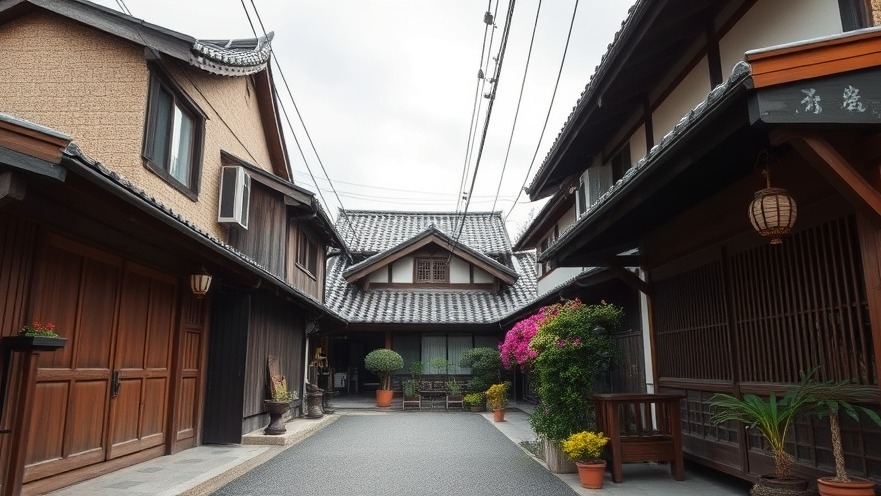Living in Japan had always been a dream for me. The clean cities, high-tech lifestyle, respectful culture, and stunning natural scenery captivated my imagination for years. But like many foreigners, I had a lot of questions: How do I get a visa? Where do I live? What job can I get? What’s it really like adjusting to Japanese life?
This guide is based on my journey—and those of other expats—navigating everything from visas and banking to cultural immersion. If you're considering making Japan your new home, here's how I made it happen and what I learned along the way.

Step 1: Prepare Your Documents and Choose a Visa
My journey began with paperwork—lots of it. To live in Japan legally, you need a valid visa. For most people, that means one of the following:
Work Visa (Specialist in Humanities, Instructor, Engineer)
Spouse Visa
Student Visa
Startup Visa
Cultural Activities or Working Holiday Visa (depending on your country)
I went with a work visa to teach English. To qualify, I needed a bachelor’s degree, a clean background check, and a job offer from a sponsoring school. Other options include working in IT, translation, marketing, or as a specialist in a needed field.
Tip: Japan’s Startup Visa is a newer option for entrepreneurs. It offers temporary residence to start a business and can lead to long-term residency if successful.
Step 2: Apply for Your Visa and Wait (Patiently)
The visa process took longer than I expected—about 6–8 weeks. The Japanese consulate required me to submit:
A Certificate of Eligibility (COE) from my employer
My passport
Passport-sized photos
The visa application form
If you're applying through a university or language school, the institution will usually help you get the COE.
During this waiting period, I started reading blogs and watching YouTube videos about daily life in Japan. Trust me—it helped prepare me for culture shock.
Step 3: Find Accommodation Before You Arrive
Finding an apartment in Japan can be tricky, especially if you don't speak Japanese. Many landlords prefer Japanese tenants or companies to act as guarantors. I was lucky—my school helped arrange a furnished apartment in Tokyo.
If you're on your own, try:
Airbnb or monthly rentals for your first month
GaijinPot Apartments
Sakura House for short-term stays
Local agents like Leopalace, which are more foreigner-friendly
You’ll need to pay key money, deposit, and agent fees, which can add up to 3–5 months’ rent upfront. Be prepared.
Step 4: Open a Bank Account and Get a Phone
Once I landed, I needed a bank account and SIM card ASAP. Japan is still a cash-heavy country, so having a local account is crucial.
Bank account setup:
Bring your Residence Card, passport, and hanko (personal seal—although some banks now accept signatures).
Try Japan Post Bank, Shinsei, or Prestia, which are more expat-friendly.
You’ll need a permanent address and a phone number to register.
Phone plan options:
Mobal and Sakura Mobile offer expat-targeted SIM plans.
Rakuten Mobile and UQ Mobile are good if you can navigate in Japanese.
Step 5: Register Your Residence and Get National Insurance
After I moved in, I visited my local ward office to:
Register my address
Enroll in National Health Insurance
Get my My Number Card (Japan’s social security number)
Health insurance is mandatory. I paid about ¥2,000/month, and it covered 70% of most medical costs. Dental visits and checkups were surprisingly affordable.
Step 6: Understand Career Options and Income Expectations
Many foreigners in Japan teach English. I did this for my first year. But Japan also has opportunities in:
IT and programming
Digital marketing
Translation and localization
Finance and consulting
Content creation and startup ecosystems
I met people on sponsored visas, as well as those with specialist visas in engineering and design.
Minimum wage is low (about ¥750–¥1,000/hour), so your salary will depend on your profession and city. Big cities like Tokyo and Osaka offer higher pay but come with a higher cost of living.
Step 7: Navigate Everyday Life
The cost of living in Japan can be manageable, depending on where you live and how you spend.
Here’s what I typically paid living in Tokyo:
Rent: ¥70,000–¥100,000/month (studio)
Utilities: ¥10,000/month
Groceries: ¥30,000/month
Phone/Internet: ¥5,000–¥8,000/month
Health insurance: ¥2,000–¥3,000/month
Other daily life tips:
Always separate your trash—it’s a serious matter!
Use IC cards like Suica or Pasmo for public transport.
Convenience stores are lifesavers (try FamilyMart’s chicken).
Learn basic Japanese phrases—it makes a big difference.
Step 8: Immerse Yourself into Japanese Culture
One of the best parts of my experience was slowly learning the culture. From taking my shoes off indoors to participating in local matsuri (festivals), I found countless ways to immerse myself.
I also joined:
A language exchange meetup
A kendo class
A hiking group that explored nearby mountains
Japan rewards curiosity and respect. Even if you make mistakes, locals appreciate your effort to integrate.
Step 9: Build Your Long-Term Plan
If you want to stay in Japan long-term, plan ahead. After 10 years of legal residence, you can apply for permanent residency. Some can apply earlier (after 3–5 years) based on income, contributions, or spouse visas.
To do this, you’ll need:
Proof of continuous residence
Stable income
Tax records
Community involvement
Marrying a Japanese national can also fast-track your residency, but Japan checks closely to ensure it’s not a sham marriage.
Step 10: Stay Legal and Manage Finances
I kept careful records of my visa status, taxes, and insurance. Japan takes documentation seriously.
Some key notes:
File your annual tax return if self-employed or earning outside a company
Pay into the pension system—you may qualify for refunds later
Keep your My Number Card secure
If you're freelancing or running your own business, you can register a sole proprietorship through your local tax office. It’s relatively simple and allows you to issue invoices and deduct expenses.
Bonus: What No One Tells You
Loneliness can creep in, especially during your first months.
Work culture can be rigid—long hours, hierarchy, and less flexibility.
Dating is different—cultural nuances abound.
There’s a "dark side of living" in Japan that includes social isolation, work pressure, and language barriers.
But with the right mindset, support network, and adaptability, these hurdles become part of the journey.
Why Japan Became My New Home
After the culture shock wore off and I built my daily rhythm, Japan started to feel like home. I loved how safe it was, how deeply respectful society is, and how every season brings something new—sakura in spring, festivals in summer, koyo in autumn, and peaceful snowy landscapes in winter.
I’ve now lived in Japan for over seven years, worked in startups, taught English, freelanced, and made lifelong friends. If you’re drawn to this country, I can tell you from experience—it’s worth the leap.
Final Thoughts
This guide is my way of giving back to the community that helped me. Moving to Japan as a foreigner isn’t always easy. It takes persistence, flexibility, and respect for the culture. But if you plan ahead, learn the language, and build a support system, you’ll thrive.
Japan is waiting.
 Add Row
Add Row  Add
Add 




Write A Comment